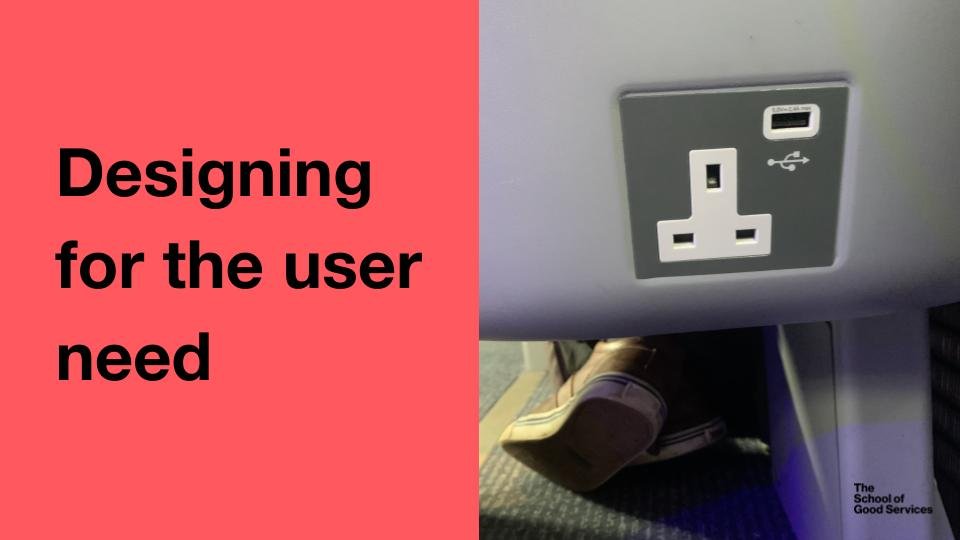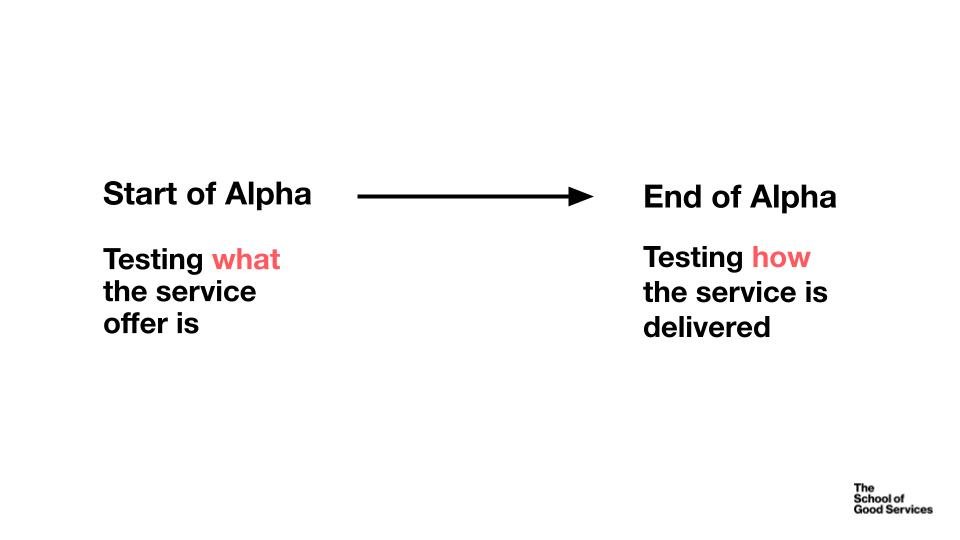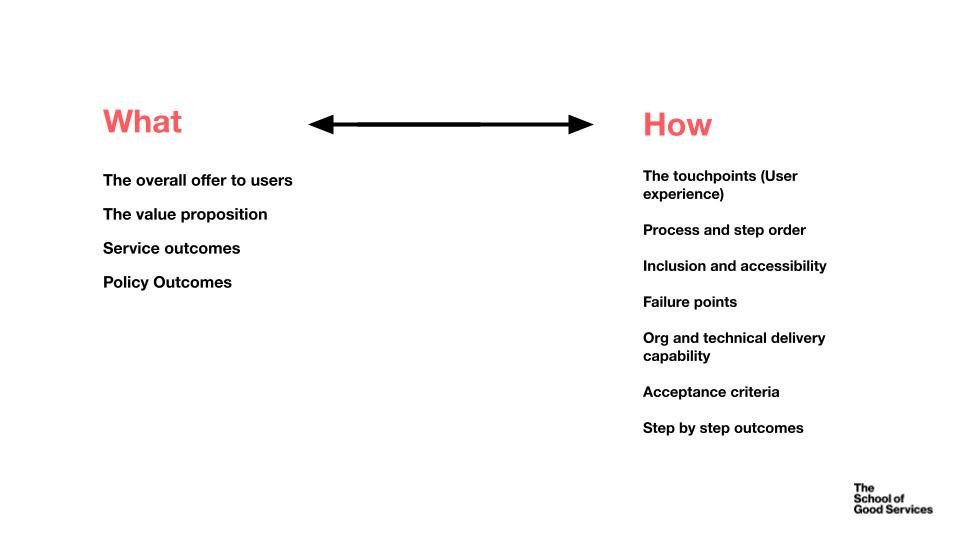Plugs on trains and meeting user needs
Hallelujah. It finally happened! The West Coast train line put plugs onto the backs of all seats!
Today I’m headed back from Glasgow to London. A trip I make regularly and used to do even more often than I do now. In the past, the West Coast train really was a second office for me, so it was important to be able to carry on working as I travelled.
Every time I got on the train I went through a preparation ritual of charging my laptop, extra battery pack and phone. Without working Wifi on the train, I’d tether my phone for 4G and by halfway through the journey have a dead phone, dead laptop and a sad Sarah.
I had one user need;
Be able to work on the train and that meant as a user I wanted to charge my laptop and phone as I travel. Good Wifi is another, but I’ll let that one go for this post.
And it has finally been met!
It got me to thinking about something that always comes up in discussion when I train in Service Design. What fidelity do we work to with user needs and what do we focus on testing and at what point?
Truthful answer, it’s really different based on the context you’re working in BUT, its helpful to consider what level of fidelity you’re working to and for what purpose.
Now there are far more in-depth books on this topic like Mastering the requirements process however I like to help make things simple so they are memorable and easier for people to build their confidence in design.
At the School of Good Services we often refer to this;
In early discovery and alpha (sometimes called define, or ideation, or early testing), you are finding out what people need and then testing what you might offer that group to meet their needs? Is what you want to offer, the right thing for your users?
As you move through this process, you are then testing in more detail how you deliver that offer.
Start of Alpha: Testing what the service offer is
End of Alpha: Testing how the service is delivered
The same goes for user needs. Our first user needs for a train, and most important, is a user needs to get from A to B. Without moving the user from A to B, there’s not much to consider beyond that.
Then, we get into the user needs of being able to work on the train, change their time of travel, transport their luggage etc. Arguably, accessible user needs should be part of any fundamental offer and baked in from the start!
It’s like testing the function for a pizza delivery process tracker without ensuring that you have nailed getting the pizza delivered. We always start with fundamental needs and making sure we get the offer right, then iterate and add.
How we prioritise needs then becomes a question in relation to the business model, what does the organisation want to prioritise the most and what make senses in relation to their development timeline?
Meeting needs that grow revenue?
Make the service inclusive?
Improves the experience?
It depends on the organisational priorities. So we think about user needs in these ways when we are researching and testing;
Macro user needs: Defining what users need from your service
Micro user needs : Defining how users need to use your service
With establishing macro user needs you may also be looking to extend understanding of who your users are, or even more into new opportunity areas.
In summary we’re starting with defining the what, then the how. Increasing the fidelity and confidence we have in what we’re designing and delivering through testing.
Defining the What
The overall offer to users
The value proposition
Service outcomes
Policy Outcomes
Defining the how
The touchpoints (User experience)
Process and step order
Inclusion and accessibility
Failure points
Org and technical delivery capability
Acceptance criteria
Step by step outcomes
Service Design approaches aside, I’m typing this on a laptop as it charges, on a train and I am stoked!
Now if we could just meet the planetary need of make trains cheaper than car and aeroplanes and help people to switch to more sustainable transport I’d be a happy service design bunny.





